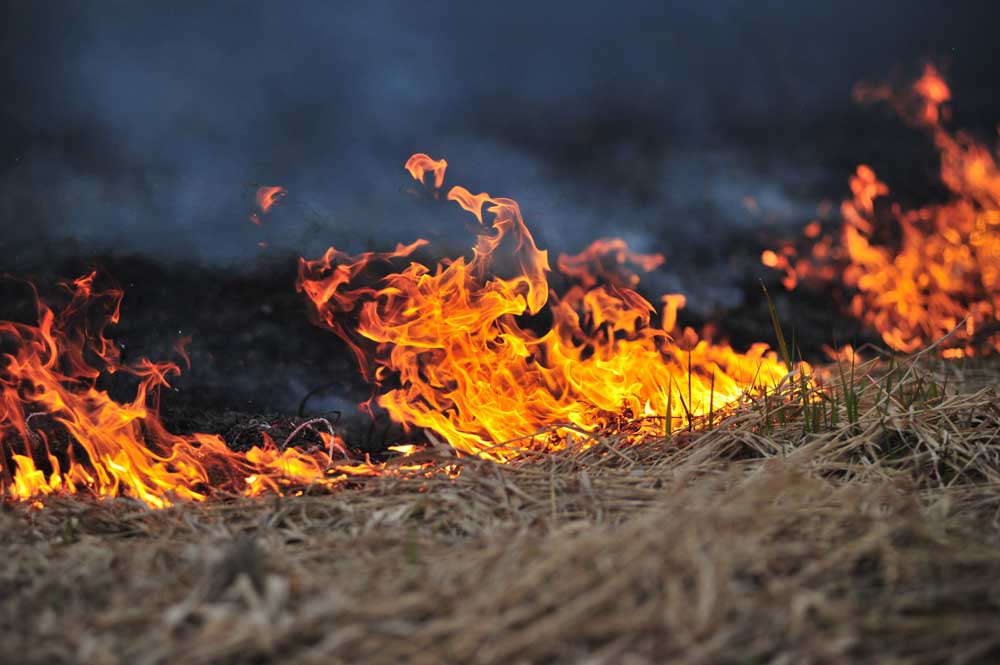Crater Lake crowds remained moderate in 2023
Published 12:02 pm Wednesday, January 24, 2024
More people visited Crater Lake in 2023 than the year prior, but the beautiful national park still saw moderate crowds by recent standards. That might be by design.
In 2023, a total 559,976 people visited the park, according to data released this month by the National Park Service, including 416,104 people who visited between June and September. That’s a 6% increase over the annual visitor count in 2022, but a far cry from the record 756,344 people who showed up in 2016.
Crater Lake Superintendent Craig Ackerman said while several issues are likely at play, he suspects two main reasons for the recent decline in visitor numbers: unpredictability with wildfires, and a concerted effort to reduce marketing of the park.
While wildfires were not a serious problem at Crater Lake in 2023, the possibility that they could be a problem may have been enough to sway some people to visit other, less risky places in the summer, Ackerman said. That’s a trend he’s seen over the past few years, after several seasons of devastating wildfires.
Meanwhile, park officials in recent years have also been working with state and local tourism agencies to tamp down the marketing of Crater Lake, he said, especially following the enormous crowds that came between 2016 and 2019, on the heels of the National Park Service’s centennial celebration.
“We’ve asked them to back off on that,” Ackerman said of the tourism agencies’ promotion of the beautiful blue-hued volcanic caldera. “We were getting to the point where we couldn’t handle the numbers (of visitors) with the resources and staff that we had.”
Located in a rugged, remote stretch of the Cascade Mountains in southern Oregon, Crater Lake has long struggled to retain staff. When throngs of visitors show up, it has left park rangers scrambling to make sure both the people and the natural environment are protected.
Responding to the visitor counts from 2023, Ackerman noted, “we don’t have too few visitors at Crater Lake.”
Last year, the park also became embroiled in ongoing controversies surrounding Crater Lake Hospitality, a subsidiary of international hospitality company Aramark, which runs the lodging, dining, retail and boat tour operations at the park. Aramark has been accused of a number of misdeeds at Crater Lake, including allegedly withholding wages from employees and creating unsafe working and living conditions in the park. In December, Aramark was publicly criticized by Sen. Ron Wyden, who asked the National Park Service to reconsider its contract with the company.
Ackerman said he doubts the controversies have had or will have any impact on the visitor counts.
“People generally come for the park and the resources,” he said. “Experiencing commercial services at the park aren’t necessary.”
He also noted that the visitor counts aren’t necessarily precise. Like Oregon’s state park visitor counts, the estimates at national parks come from traffic counter numbers multiplied by a predetermined average number of people per vehicle. While not exact, the counts are still instructive when compared to previous years, as long as the methods remain the same.
That might change next year, however, as Crater Lake rolls out what they hope will be more accurate counting methods.
“We think we’re maybe overcounting vehicles because of trailers, but maybe undercounting the number of people in vehicles,” Ackerman said.
Even without changes in method, annual visitor counts at national parks contain a lot of variation over time, affected by weather, natural disasters, closures, economics and cultural trends.
At Crater Lake, crowds steadily increased from 1902 to 1941, when 274,002 people showed up, according to park data. Those numbers plummeted the next four years as the United States entered World War II, but visitors returned in droves after the war, with the annual count peaking at 592,400 people in 1962. Numbers took a hit during the 1979 oil crisis, falling to 410,479 visitors, and didn’t fully recover until 2013, during the lead-up to the centennial celebration.
And while some of those larger trends can be seen across the country, not every park experiences the same fluctuations in crowd numbers.
In 2023, Mount Rainier National Park posted an annual count of 1,674,296 people, its busiest year since 1977. Olympic National Park saw 2,948,604 people last year, including a record October, continuing a slow post-pandemic rebound. Yosemite National Park also continued a post-pandemic climb with 3,897,070 visitors last year, though it’s far from the park’s record 5,028,868 visitors in 2016.
Smaller national park sites in Oregon reported a mixed bag in the 2023 visitor counts.
The Oregon Caves National Monument and Preserve reported a meager 32,043 visitors; discounting 2020, it was the park’s slowest year since 1945. Meanwhile, Lewis and Clark National Historical Park saw a robust 284,739 visitors last year, its third busiest year on record. As of Wednesday, the John Day Fossil Beds had yet to report its final 2023 numbers but was on track for about 160,000 visitors, slightly fewer than last year but close to its 10-year average.
Jon Burpee, superintendent of Lewis and Clark National Historical Park, said the Oregon coast park site has plenty of room to welcome big crowds of visitors, and welcomes any future growth – especially as the park works on new exhibits that add historical context and Indigenous perspectives to the pioneer story.
Big crowds or small, he said it’s a joy to be able to share these beautiful places with the public.
“It’s just really nice to see people enjoying their public lands, whether it’s the fourth-grader here on a field trip, or it’s a family who’s traveled from really far away,” Burpee said. “It makes me pretty proud that the park service gets the opportunity to provide this service to people.”








